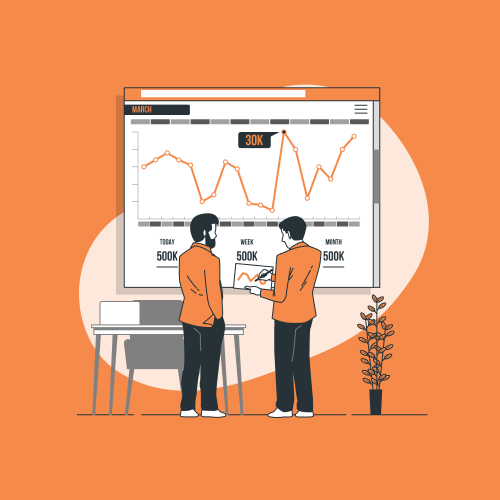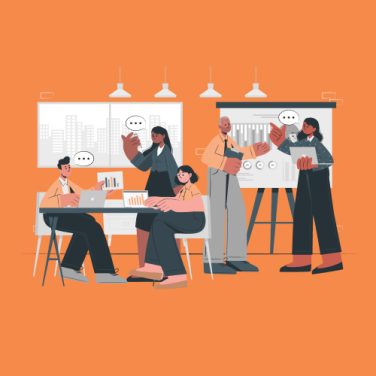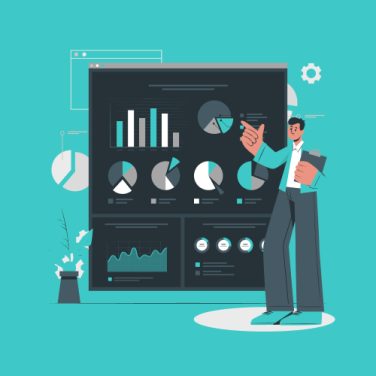Workforce planning with AI is revolutionising HR strategies as we speak, moving beyond traditional practices and offering predictive insights that provide a significant competitive edge.
AI tools enhance productivity and efficiency across the organisation by automating routine functions and offering real-time data analysis, empowering HR professionals to focus on strategic oversight rather than administrative tasks.
This shift emphasises data-driven HR decisions, where AI tools analyse vast amounts of information to predict future workforce scenarios accurately. As a result, companies can unlock workforce productivity and transform their workplaces, fostering an agile and responsive environment.
A transformative step for HR management
Harnessing the power of AI tools in workforce planning is proving to be a transformative step for HR management. These tools offer a spectrum of features designed to address various challenges in human resource management and enhance decision-making capabilities.
- Predictive analytics: AI-driven predictive analytics allows businesses to forecast workforce needs accurately. By analysing current trends and historical data, these tools can predict future scenarios, helping to minimise risks such as overstaffing or understaffing.
- AI scheduling tools: These tools provide real-time insights to optimise shift planning, ensuring that workforce allocation aligns with business goals. They consider employee availability and skill sets, which can significantly reduce conflict and overtime costs, thereby boosting employee satisfaction.
- Personalised employee development: With capabilities to analyse performance data, AI tools identify skill gaps and recommend tailored learning resources. This personalisation empowers employees, leading to enhanced engagement and professional growth.
- AI-based decision support: By integrating machine learning and data analytics, AI tools offer HR managers comprehensive insights for strategic planning and operational efficiency improvements.
Key features and capabilities

AI tools in workforce planning are distinguished by features that optimise HR operations:
- Data-driven HR decisions: Tools like those offered by MiHCM leverage comprehensive analytics to reveal workforce trends, enabling managers to make informed decisions that enhance productivity.
- Remote workforce management: The versatility of these tools supports the management of remote teams, a crucial feature in today’s distributed work environments. This ensures seamless operations and connectivity across diverse geographical locations.
- Performance prediction: With advanced analytics, these tools help in predicting employee performance, aiding in aligning workforce capabilities with strategic objectives.
As the workforce planning landscape evolves, adopting AI tools that offer scalable solutions becomes imperative.
These innovations not only facilitate enhanced decision-making but also set a sustainable pace for achieving long-term HR objectives, making them indispensable for modern-day HR practices.
Successfully implementing AI tools
Successfully implementing AI tools in HR requires a structured approach to ensure seamless integration and to maximise the benefits of AI-driven workforce planning.
Here’s how HR teams can effectively adopt AI tools:
- Assess your existing systems: Before introducing any new AI tools, it’s vital to evaluate your current HR systems. Understand their capabilities and identify gaps where AI solutions can provide added value. Conduct an audit to identify potential compatibility issues, preparing the ground for successful technology integration.
- Define objectives and goals: Clear objectives will guide the implementation process. Determine what you aim to achieve with AI in workforce planning, whether it’s optimising scheduling, enhancing predictability in staffing, or improving employee learning paths.
- Choose the right AI tools: Based on your objectives, select AI tools that provide suitable features. Whether you’re looking at MiHCM solutions for their robust analytics or their AI-based scheduling tools for better workforce allocation, ensure the chosen tools align with your strategic goals.
- Develop an implementation roadmap: Create a detailed plan that outlines the implementation steps, timelines, and responsible teams. This roadmap should include training sessions for HR teams, ensuring they are comfortable with using new technologies.
- Test and iterate: Begin with a pilot programme to test the AI tools in a controlled environment. Gather feedback to identify areas for improvement and make necessary adjustments before a full-scale rollout.
- Facilitate change management: With any new technology adoption, change management is crucial. Communicate the benefits clearly to employees and offer training and support to alleviate concerns and ensure a smooth transition.
Overcoming challenges in AI adoption

Overcoming challenges in AI adoption involves addressing data quality, securing data privacy, and balancing AI automation with human expertise.
It’s essential to ensure data used by AI is accurate and comprehensive to avoid any potential bias.
Moreover, implementing robust data protection measures and delivering transparent employee communication can help mitigate privacy concerns.
Real-world examples
Adopting AI in workforce planning is no longer a futuristic concept, it’s a proven strategy for operational enhancement. Several organisations have successfully integrated AI-driven solutions, demonstrating tangible results and offering valuable lessons for others to follow.
One prominent example is IBM, which shifted towards cloud computing and digital technologies, necessitating a transformation in workforce skills.
By implementing AI systems, IBM enhanced their strategic workforce planning, achieving a 50% reduction in time-to-hire and increasing employee engagement by 20%. This significant improvement exemplifies how AI can streamline processes and enhance decision-making by providing detailed insights into employee skills and training needs.
Another case worth noting is a major retailer that used AI tools to optimise its scheduling and staffing. By analysing real-time data and employee preferences, they dramatically reduced scheduling conflicts and overtime, boosting overall employee satisfaction. This aligns resources more effectively, allowing the company to maintain high service levels even during peak demand periods.
A leading tech company applied AI-driven solutions to predict its staffing needs accurately. By leveraging predictive analytics, they addressed potential workforce gaps proactively, ensuring they consistently met project deadlines and maintained productivity without overstaffing. This approach demonstrated the importance of aligning employee capabilities with business goals, showing how AI can directly enhance an organisation’s competitive edge.
These case studies illustrate that integrating AI tools in workforce planning leads to improved efficiencies and strategic advantages. As seen, AI not only optimises resource allocation but also fosters a more engaged and capable workforce, paving the way for sustainable growth in various industries.
AI tools are shaping the future
As we look forward, AI tools are unmistakably shaping the future of workforce planning, offering an array of benefits that are hard to ignore. By leveraging AI-driven insights, HR teams can make data-driven decisions that enhance operational efficiency and workforce engagement.
MiHCM solutions bring HR analytics to the forefront, transforming how organisations operate by predicting workforce performance and facilitating better decision-making. This AI integration supports remote workforce management and enhanced performance management, catering to the flexible needs of a modern, distributed work environment.
Exploring the potential of AI tools in workforce planning is not just about staying competitive; it’s about leading the charge towards innovative HR strategies. As AI continues to redefine traditional roles and streamline processes, its adoption is key for a resilient and agile HR framework.
The time is ripe for organisations to embrace AI solutions to transform their HR functions, ensuring a responsive and productive workforce ready to meet future challenges.



